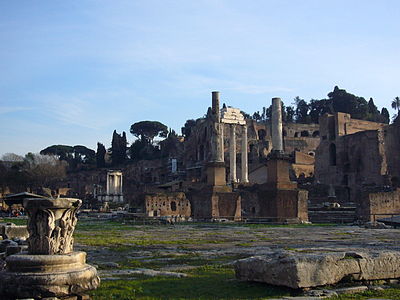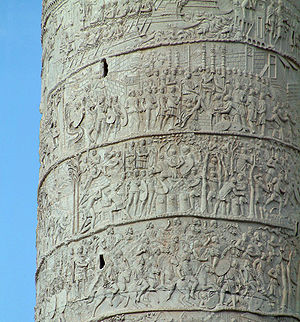Portal:Ancient Rome/Selected picture
Selected pictures

The Roman Forum (Latin: Forum Romanum) was a rectangular forum at the heart of the city of Ancient Rome. The Forum was used for military triumphs, elections, criminal trials, gladiatorial matches, and as a meeting- and business-place. The Forum survives today in ruins, and is the oldest structure in the modern city of Rome.

Marcus Aurelius (April 26, 121 CE. – March 17, 180 CE.), was Roman Emperor from CE 161 to 180 who defeated several significant invasions and put down a revitalisation of the Parthian Empire. His Stoic tome Meditations, which he wrote while on campaign, is still revered as a literary monument to a philosophy of service and duty.

A she-wolf on a Roman coin from circa 77 BCE. The Roman Republic and Empire's currency was used from the middle of the third century BC until the middle of the third century AD.

The Villa of the Mysteries (Italian: Villa dei Misteri) is a well preserved ruin of a Roman Villa which lies some 400 metres northwest of Pompeii, southern Italy. In this fresco from the villa, a Bacchian rite is depicted.

Trajan's Column (Italian: Colonna Traiana) is a monument in Rome which commemorates the Roman emperor Trajan's victory in the Dacian Wars in 101-106 AD.

Gaius Gracchus (154 BC – 121 BC), a tribune of the people, presiding over the Plebeian Council. When presiding, the tribune could make motions and propose laws to the council.
